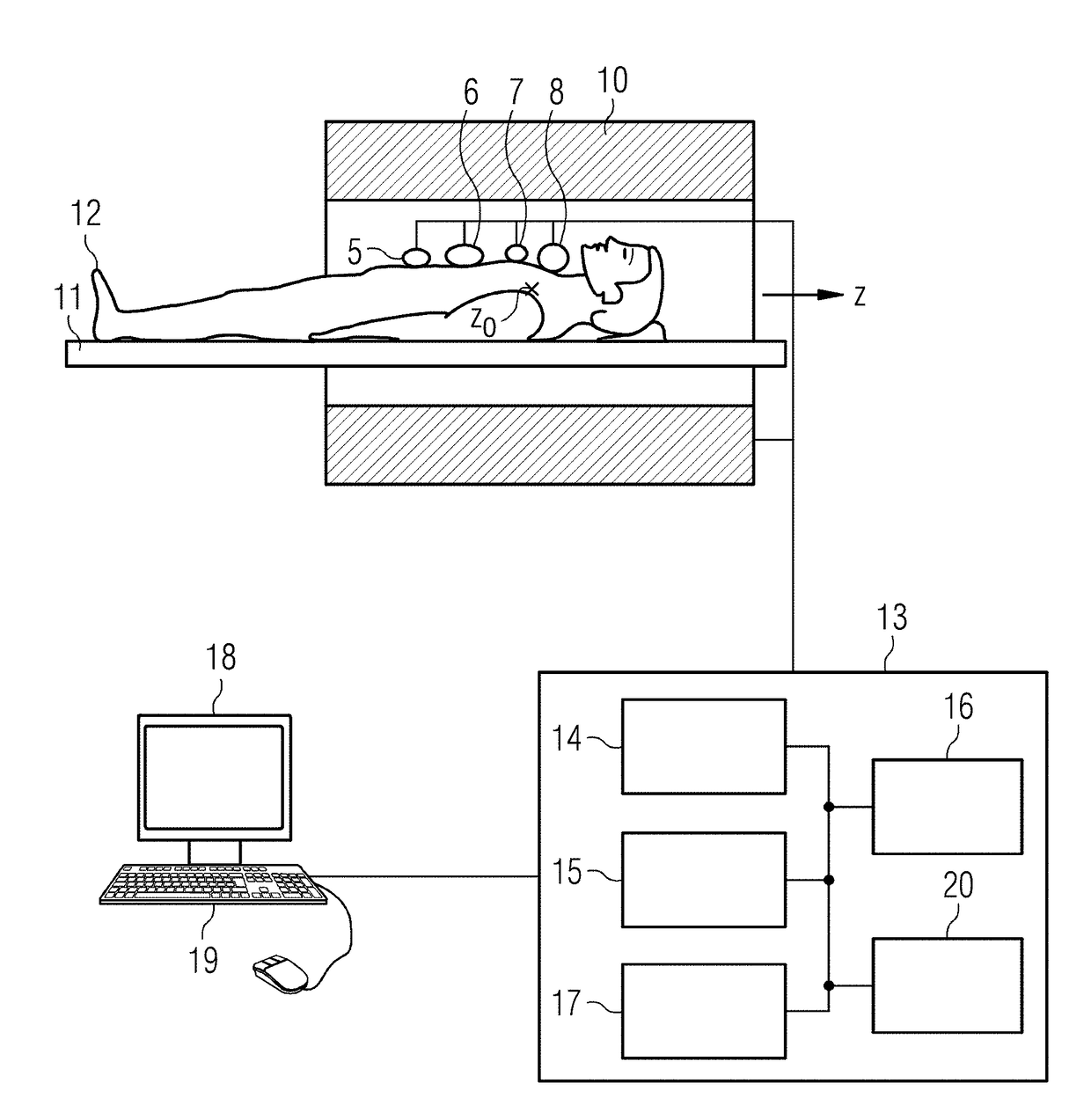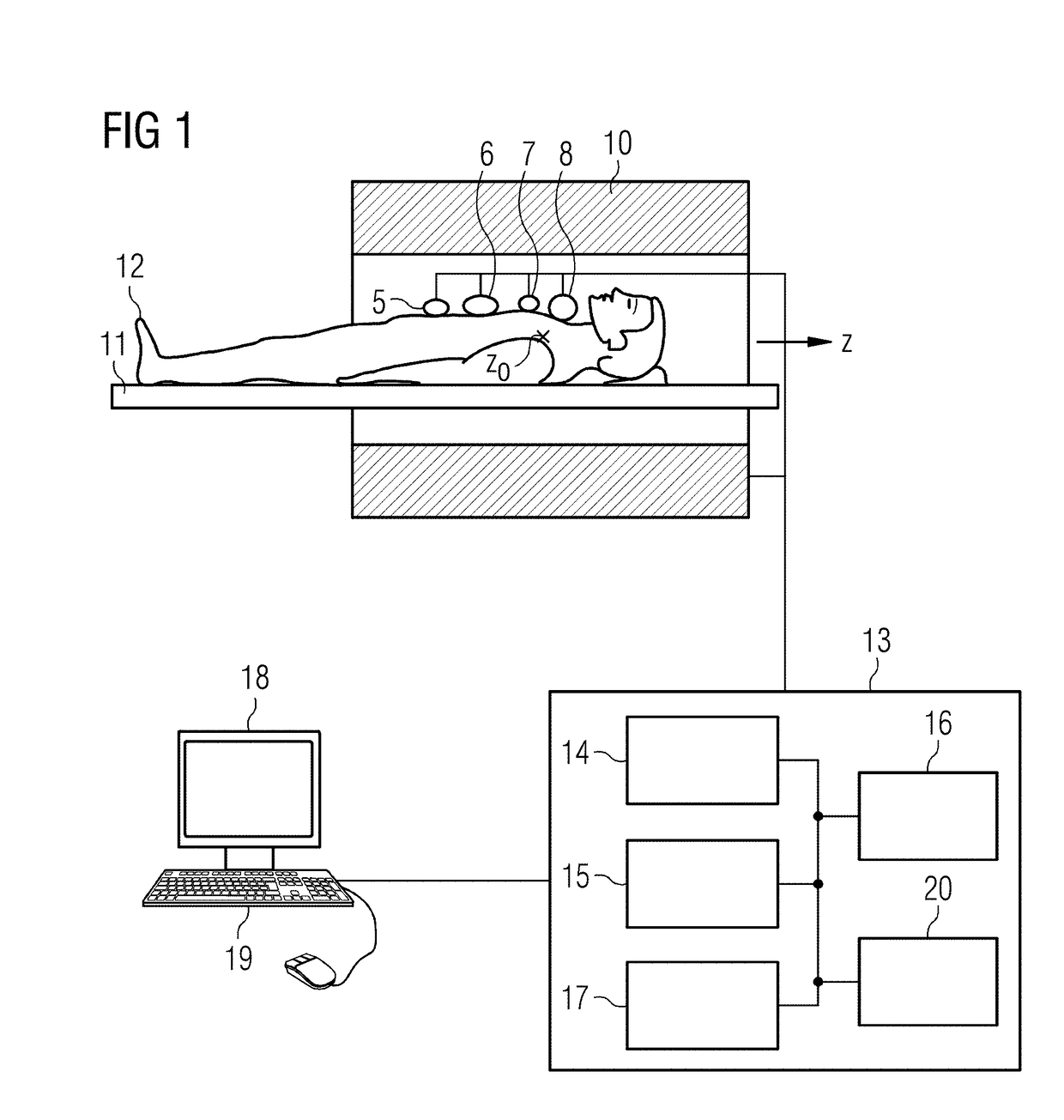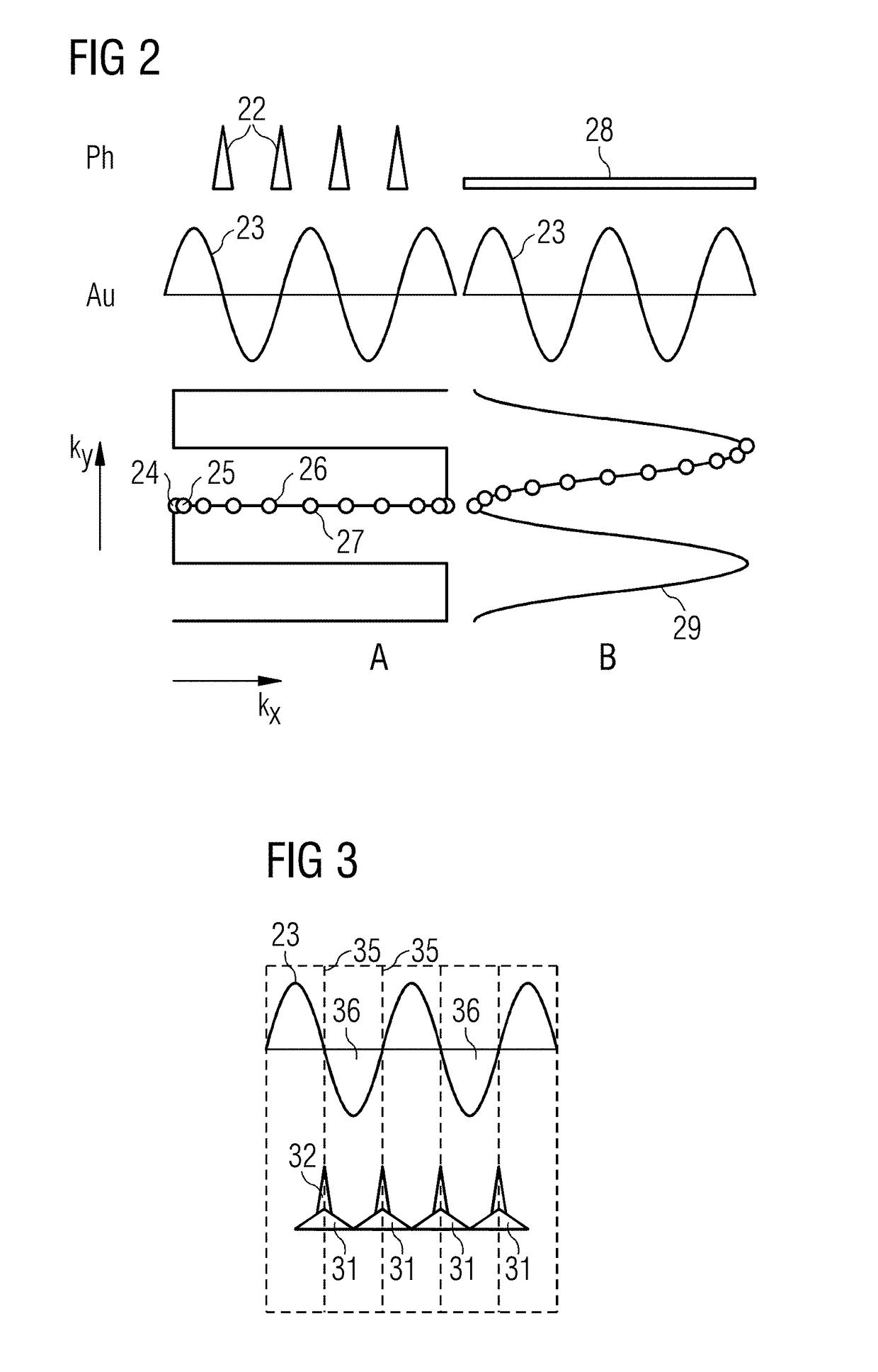Method and magnetic resonance apparatus for quiet echo-planar imaging
- Summary
- Abstract
- Description
- Claims
- Application Information
AI Technical Summary
Benefits of technology
Problems solved by technology
Method used
Image
Examples
Embodiment Construction
[0024]FIG. 1 is a schematic representation of an MR apparatus with which MR images can be acquired according to the invention using the echo-planar technique with satisfactory image quality and low noise development in a short acquisition time. The magnetic-resonance apparatus has a scanner with a magnet 10 that generates a polarization field B0, wherein a person to be examined lying on a bed 11 represents the examination object 12, which is moved into the isocenter Z0 of the magnet 10 in order to acquire spatially encoded magnetic resonance signals from the examination object at that location. The radiation of radio-frequency pulses and activation of magnetic field gradients can disrupt the magnetization generated by the polarization field Bo by deflecting the nuclear spins from the steady state position. The currents induced in reception coils 5-8 during return of the nuclear spins to the steady state position (relaxation) can be converted into magnetic resonance signals. The gene...
PUM
 Login to View More
Login to View More Abstract
Description
Claims
Application Information
 Login to View More
Login to View More - R&D
- Intellectual Property
- Life Sciences
- Materials
- Tech Scout
- Unparalleled Data Quality
- Higher Quality Content
- 60% Fewer Hallucinations
Browse by: Latest US Patents, China's latest patents, Technical Efficacy Thesaurus, Application Domain, Technology Topic, Popular Technical Reports.
© 2025 PatSnap. All rights reserved.Legal|Privacy policy|Modern Slavery Act Transparency Statement|Sitemap|About US| Contact US: help@patsnap.com



